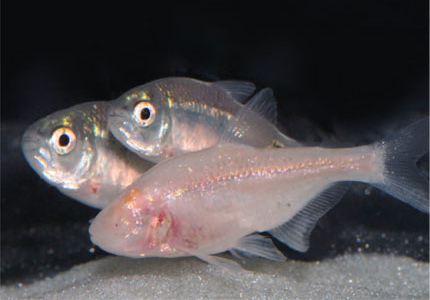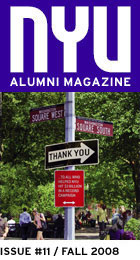Cutting-Edge Research
negotiations
Ideal Equation: Everybody Wins
by Matthew Hutson
Dividing a cake is not a big issue for most adults. As long as everybody gets a slice they’re usually happy.But replace them with quarreling kids—He got more frosting! She got more candles!—and you begin to see the need for a fair method.Now replace the kids with a couple in the throes of divorce, and swap the dessert with a pile of assets, and things can get messy. To solve this problem, Steven Brams, professor in the Wilf Family Department of Politics, who studies game theory and strategies for negotiation, created an algorithm called Adjusted Winner (AW), which regularly gets both parties more than 50 percent of the goods—often even 75 percent.
It might sound too good to be true, but AW is based on the premise that people want different things, Brams says. Through a procedure where each party allocates numerical points to items in the package, each initially wins the ones they value more and then certain adjustments are made so that in the end both arrive at a solution that is “envy–free” (both get at least 50 percent), “equitable” (they get the same amount over 50 percent), and “efficient” (there’s no better solution). NYU recently licensed the patent for AW to a Boston firm, Fair Outcomes, Inc., which is now offering AW and other dispute resolution algorithms online, along with escrow services.
Brams made a splash in the mid–1990s, when he first introduced AW and demonstrated its effectiveness by applying it to the Donald and Ivana Trump divorce and the Panama Canal negotiations, yielding results similar to the real–life outcomes, minus the drama. A New Yorker writer predicted, perhaps facetiously, the algorithm would soon put lawyers out of business. In 1996, Brams wrote a report with fellow NYU politics professor David Denoon proposing a solution to Asia’s Spratly Islands dispute, which involves 6 nations vying for crucial shipping lanes and massive hydrocarbon deposits. Though senior policy–makers in Washington, D.C., and Beijing were impressed, they chose not to use AW. Michael Wheeler, co–director of the Dispute Resolution Program at Harvard Law School, says algorithms have limited potential in international negotiations. Discussing former senator George Mitchell’s success brokering peace in Northern Ireland, Wheeler says, “I don’t think the bulk of his work was ‘I’ll give you two of these if you give me three of those.’ It was about relationship building.”
“Expert negotiators may pick up nuances that an algorithm doesn’t reflect,” Brams concedes, “but you could start with the algorithm and then refine that solution.” He has penned a popular book on the subject (The Win–Win Solution, with Alan D. Taylor), continues to write articles and books, and gives seminars to lawyers. “It’s a problem of educating people to a radically new approach to dispute resolution,” Brams says, “and it doesn’t happen overnight.”
biology
Coming Out of the Dark
by Ted Boscia
For at least one million years, the Mexican cavefish has lived in darkness. Down in the low–lit pools of its habitat, the fish progressively lost unneeded eye function in order to conserve energy—a process that took some 500,000 years. But in just one generation, biology professor Richard L. Borowsky has restored sight to the offspring of these fish in his lab.

The research, published in Current Biology and Evolution & Development, reverses thousands of years of regressive evolution and could offer clues to human blindness. “Cave animals can be a model system for us as we try to identify the genetic markers for vision loss,” Borowsky says. “Our research could be beneficial to humans who have a genetic predisposition to di–seases like macular degeneration, cataracts, or other conditions that deteriorate the structure and function of the eye.”
Borowsky and his team focused on four populations of the Mexican cavefish, Astyanax mexicanus, each of which developed the trait independently after evolving from surface tetras. Over time, the fish lost eye pigmentation and its essential vision structures vanished. However, when Borowsky crossbred isolated groups of the cavefish, which recombined vision genes, 41 percent of first–generation offspring regained eyesight in one particular hybrid group. “We saw a reemergence of the processes that must occur in connection with the brain for vision to be possible,” he says. “These are senses that have not been exercised since these fish entered the caves.”
Borowsky first studied the country’s cavefish at the suggestion of a Mexican graduate student more than 15 years ago. Since then, this research has taken him to other far–flung places, such as Thailand and Brazil, and his lab now boasts one of the nation’s largest collections of cavefish. “The more I study cavefish, the more I realize every cave is different,” he says. “But all share the same characteristic: They’re dark.”
science education
Young Einsteins
by Matthew Hutson
 Recently a group
of scientific investigators buried potatoes in the ground to lure local insects and worms. When a young man named Alan reported to the group that the soil invertebrates hadn’t even noticed his potato, his collaborators suggested how the experiment might have gone wrong. After
a long discussion, Alan offered another hypothesis the others hadn’t considered: “I’m not even sure the bugs like the potato.” A bold theory for a second–grader.
Recently a group
of scientific investigators buried potatoes in the ground to lure local insects and worms. When a young man named Alan reported to the group that the soil invertebrates hadn’t even noticed his potato, his collaborators suggested how the experiment might have gone wrong. After
a long discussion, Alan offered another hypothesis the others hadn’t considered: “I’m not even sure the bugs like the potato.” A bold theory for a second–grader.
“He was being critical of not only everything everyone was saying, teachers and students alike, but also of the original text,” says Susan A. Kirch, an associate professor of teaching and learning. Kirch, who witnessed Alan’s insight—and cited it in a recently published paper in the journal Cultural Studies of Science Education —has spent the past four years working with young children and the past seven years working with master’s students learning to teach them science. Her call to arms: Don’t underestimate kids when it comes to science.
Teachers, books, and prepackaged demonstrations commonly present science as a static collection of knowledge rather than a process. That’s great if your purpose is to teach facts, but, Kirch says, if you want to teach the process—“how do you analyze data, draw conclusions, evaluate whether something makes sense to you as a person”—kids must be taught to do their own research and ask their own questions. Given the chance, she has found children are capable of such scientific reasoning.
A former bench scientist in molecular and cellular biology now on faculty at the Steinhardt School of Culture, Education, and Human Development, Kirch has also started recording conversations among adult researchers and notes strong similarities with the ones she encourages among second–graders. Kirch is preparing her preliminary observations for publication.
If all schools follow her lead, the day of the papier –mâché volcano passing as a worthwhile science project may become extinct.
photo © top: richard borowsky, bottom: istock







